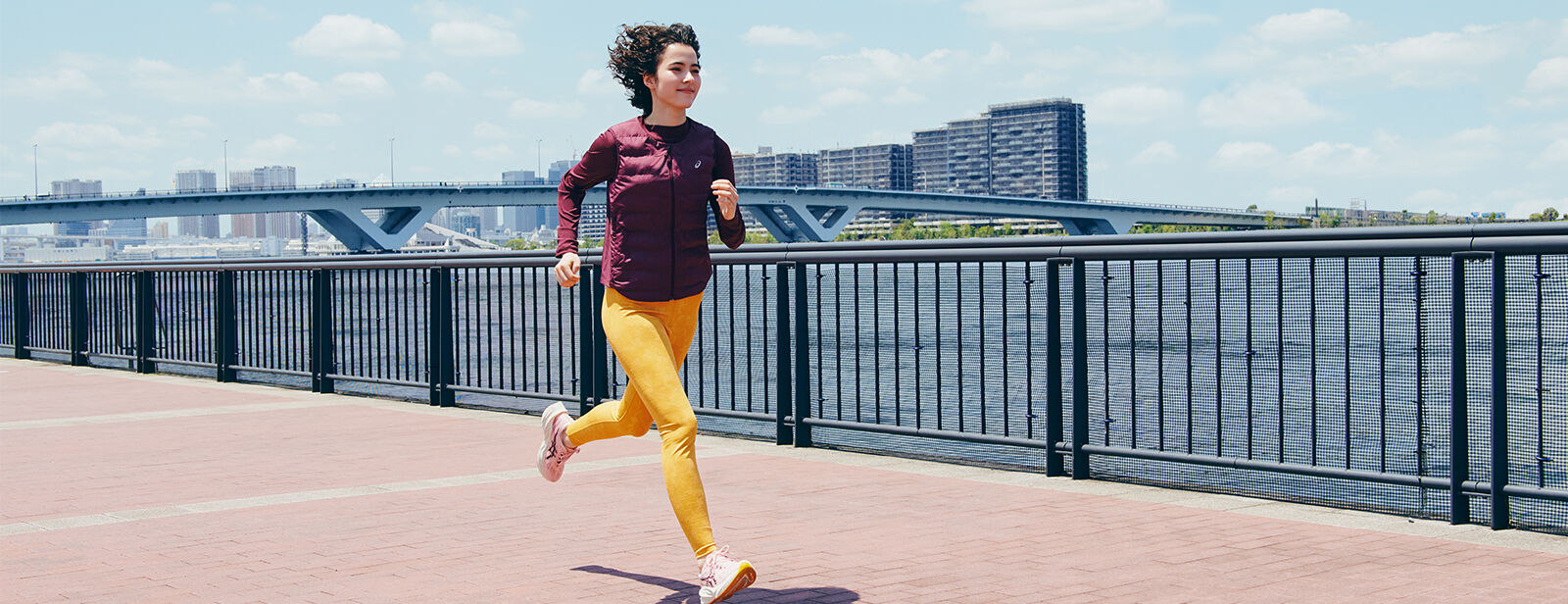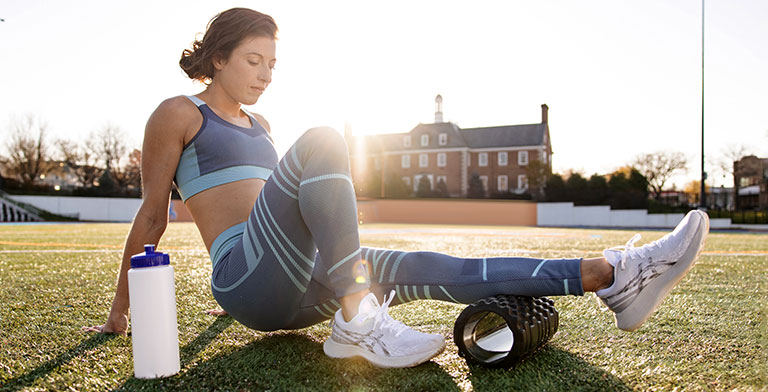With increased fitness, your breathing will be less labored. But you can also try out different breathing techniques to help you breathe more efficiently while you're running.
Should You Breathe Through Your Nose or Mouth While Running?
Whether you are beginning your running journey or are an experienced runner, the chances are you've seen conflicting tips about how you should breathe. Some people say that your lungs will not get enough oxygen if you breathe through your nose. Others say that breathing through the mouth can harm your throat. Who is right? Is there a right way to breathe? Let’s take a look at both sides.

The Benefits of Mouth Breathing
Many runners breathe through their mouths because it allows them to take in more air.
Consider your respiratory passageways as if they were a straw. Your nose is a smaller tube, and so it takes in less air. If you use deep belly breathing rather than shallow chest breathing, mouth breathing will enable more air to reach your lungs.
Furthermore, inhaling through your nose may cause clenched jaws and stiffness in facial muscles. If you take a deep breath through your nose now, you’ll experience this sensation. Inhaling through your mouth avoids these problems.
The Benefits of Nose Breathing
Running experts tend to recommend inhaling through your nose and exhaling through your mouth. One good reason for this is that the hairs in the nose help to filter particles out of the air and help to warm the air for a smoother entry into the lungs. Nasal breathing is particularly beneficial when air temperature and humidity are low. People with asthma may also benefit from breathing through their nose while running, as inhaling through their mouth may aggravate their condition.
Skilled runners who incorporate mindfulness in their workouts often adopt nose breathing. It can help to slow down exhalations, making it easier to breathe more thoughtfully. Conscious breathing makes you more aware of where you are and what you're doing. Mindful breathing can keep you present, in the moment. Because you're depleting your body of oxygen, you'll almost certainly feel more tired if you get lost in short, shallow chest breathing. The goal of mindful breathing is to control the narrative between your mind and your body.

Combination Breathing
Combination breathing is a technique that combines nasal breathing with mouth breathing. Very experienced runners often choose this technique because it allows them to get the benefits of both types of breathing while they're running. It takes practice to find the right balance between nasal and mouth breathing, so new runners tend to stick with one or the other until they get used to it.
Tips for Breathing Better While Running
Here are some running tips for breathing better while running that will help you get the most from your workouts.
Diaphragmatic Breathing
When you run, the muscles in your upper back, shoulders, and neck tighten, which can result in shallow breaths coming from your chest. The type of deep breathing you want comes from the diaphragm, the muscle that connects the abdomen and the chest.
Deep belly breathing increases the amount of oxygen that enters your lungs, allowing you to run more efficiently because you have more fuel.
Concentrate on breathing deeply into your abdomen while keeping your arms and upper body relaxed. Instead of simply allowing your chest to rise and fall, each breath should cause your stomach to expand and contract. This can help prevent hyperventilation by encouraging slow, deliberate breathing.
Breathe Rhythmically
You can take in more oxygen and put less stress on your body by breathing in a rhythmic way. We are designed to follow rhythm. That’s why you find your feet tapping when listening to music.
When your foot strikes the ground, the intensity of the impact can put your body under stress. Exhale when your right and left feet hit the ground alternately to avoid muscular imbalances. Rhythmic breathing relieves pressure on your diaphragm and helps to balance the tension of impact on both sides of your body.
As you exhale, follow a 3:2 rhythm that allows you to alternate which foot receives the impact. Exhale for two and inhale for three-foot strikes. A 2:1 pattern may be used if you're running at a quicker pace.
If following a running pattern seems difficult, simply focus on your breathing to achieve a sense of a comfortable rhythm.
Focus on Form
Position your body to allow healthy, efficient breathing, to maximize your breath, and feel at ease when jogging. Maintain proper posture by keeping your head aligned with your spine and not allowing it to dip down or forward. It can help to imagine a string hanging above you and going through the top of your head and down your spine.
Relax your shoulders. Avoid slouching forward or hunching.
Practice Breathing to Improve Your Running and Your Life
You can enhance your breathing patterns while running if you build your breathing skills. These simple techniques can assist you with breathing efficiently and running to your maximum capacity. Aim to run at a pace that allows you to breathe comfortably without gasping for air. You are better off running efficiently and steadily than getting yourself into an oxygen-depleted state.
Make it a habit to pay attention to your breathing; and not only while you're running. Remind yourself to breathe smoothly and evenly, and pay attention to when your breathing becomes irregular. Your breathing may react to different situations or activities throughout the day. This will be an opportunity to improve your breathing control. Improving your breathing will improve your running, but it might also reduce your perception of stress, improve your decision-making, and help you maintain perspective when challenges occur.




